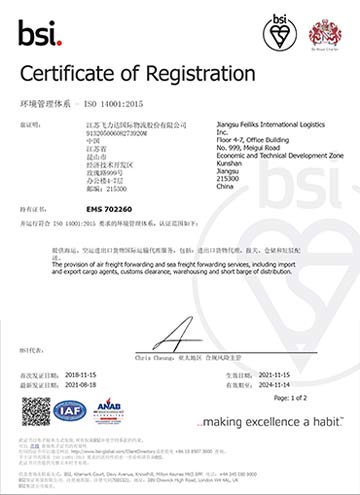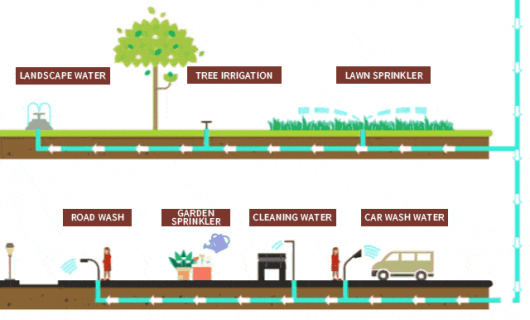Based on the green manufacturing theory and supply chain management technology, the product has the minimum impact (negative effect) on the environment and the highest resource efficiency in the whole process from material acquisition, processing, packaging, storage, transportation, use to disposal.
GREEN LOGISTICS
ENVIRONMENT MANAGEMENT SYSTEM
ISO 14001
Support environmental protection
Continuously improve objectives

RAINWATER RECYCLING SYSTEM
After the rainwater in the park is collected and treated, it meets the standard. Rainwater reuse can save water and protect environmental ecology, which meets the needs and development of the park, and also reflects an important future direction of green environmental protection and water resources utilization.


APPLICATION OF UNMANNED TECHNOLOGY
Smart warehousing helps green logistics to land, while unmanned forklift, automated multi-layered warehouse and other technologies are adopted to save energy and improve land utilization.

CIRCULATING PACKAGING
Recycling packaging has greatly reduced packaging costs for enterprises. At the same time, good and suitable recycling packaging design can also ensure the transportation quality of products, improve the transportation reception rate, and thus raise the logistics efficiency of the whole supply chain.


CYCLIC UTILIZATION
Products made with renewable energy are recycled back to the industrial cycle.
RECOVERABLE
Products are redesigned, so that they can be easily disassembled and sorted for recycling after the end of product life.
RECYCLE BACK
Products must be easy to maintain and upgrade to establish a system of reverse circulation of resources.PHOTOVOLTAIC ENERGY GENERATION
Make full use of the roof of the logistics sharing center, build distributed power generation facilities, and spontaneously use or connect power to the Internet to achieve energy conservation, emission reduction and consumption reduction.

USE OF NEW ENERGY VEHICLES
Energy-saving new energy vehicles and foldable recycling packaging boxes are used together to optimize operating costs and promote green transportation and distribution.

INTELLIGENT LIGHTING
Intelligent lighting is carried out for most lights to provide sufficient lighting wherever and whenever needed. Intelligent lighting control can generally save 30% to 50% of electric energy and reduce the electricity cost.

Recycling
Scene control / use
Response sensing and control
Addressable / flexible grouping
Introducing solar energy conservation



